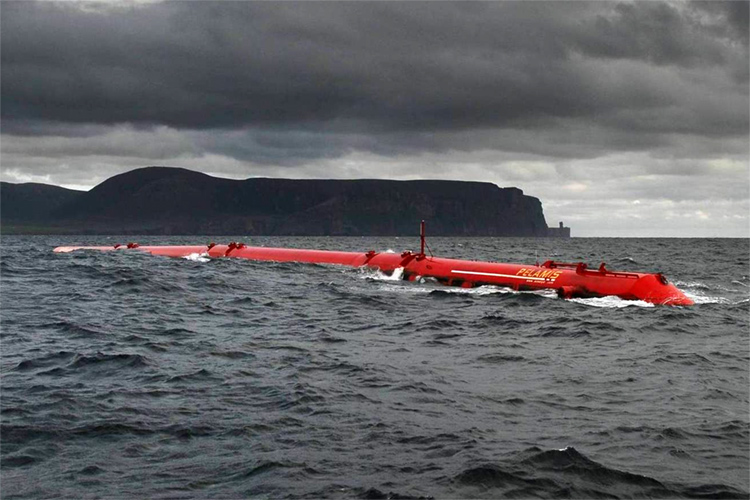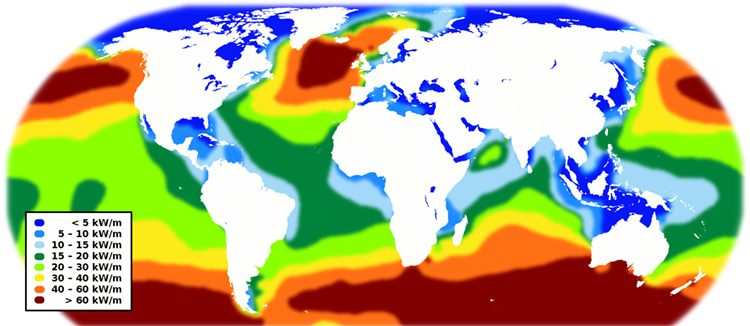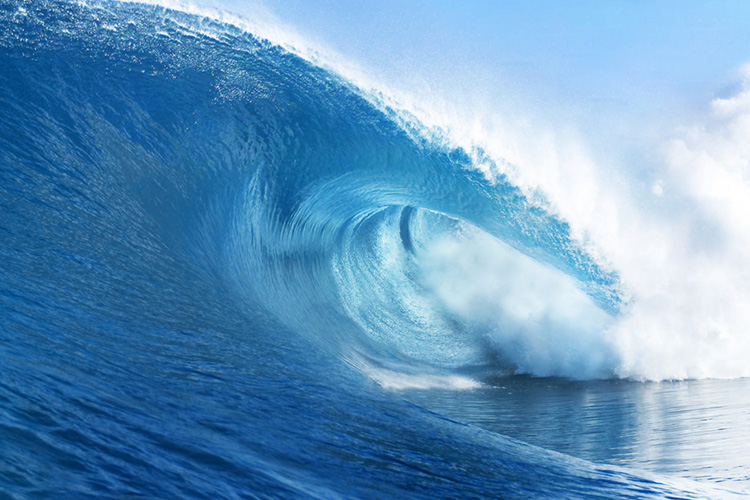Ocean waves have a lot of energy, and wave power is a renewable energy source capable of generating electricity.
Wave power is free, sustainable, renewable, and produces zero waste. Therefore, it can contribute to reducing our carbon footprint.
There is an enormous energy potential that can be taken out of the waves and tides. Still, scientists, companies, and national authorities have not yet understood how to make it a viable product.
Wave power is produced by the up-and-down motion of floating devices placed on the surface of the ocean.
In other words, wind produces waves, and then waves produce energy.
As the waves travel across the ocean, high-tech devices capture the natural movements of ocean currents and the flow of swells to generate power.

Harnessing the Power of the Waves
There are three main methods for harnessing energy from waves and converting it to electricity.
The most common technology uses buoys or float systems that rely on the rise and fall of swells to drive hydraulic pumps.
As the waves move, they will flex and bend as they pass, producing a movement in the wave energy converter, the machine that transforms kinetic energy into electricity.
There are also oscillating water column devices equipped with vertical pistons that use buoyancy and gravity to generate energy.
Finally, the tapered channel is a shore-mounted structure that channels and concentrates swells into an elevated reservoir where a hydropower device converts the pressure into electricity.
In the first two cases, electricity is carried to shore via subsea cables before feeding power to the grid.
The commercial potential of wave energy has not yet been fully explored because converting wave energy into electric power is not as simple as wind or solar energy.
The disadvantages of wave energy are the high production and installation costs, complicated maintenance and repair logistics, potential threats to marine life, and noise pollution associated with offshore and onshore structures.
A Slow Start
In 1799, Pierre-Simon Girard patented the world's first wave energy concept, but the first high-scale prototypes only saw the light of day two hundred years later.
The first-ever commercial wave energy system was installed in Scotland's Islay in 2000.
The Islay LIMPET (Land Installed Marine Power Energy Transmitter) was a 500 kW wave energy collector connected to the National Grid. It was fully decommissioned in 2018.
The current trials, farms, and commercial installations are located in Hawaii (Azura Wave and BOLT Lifesaver), Sweden (Sotenäs), Spain (Mutriku Wave Power Plant), Israel (SDE Sea Wave Power Plant), and Greece (SINN Power).
However, most of the projects are still in the pilot phase. It is fair to say that, from a pragmatic perspective, wave power is still in its infant stage compared with wind power, solar power, and other sustainable and renewable energy sources.
Today, the power obtained by harnessing the energy produced by waves at sea is still minimal, and the overall capacity is under 15MW.
The areas of the globe with the highest wave energy potential are the North Atlantic, the North Pacific, and the Southern Ocean.

